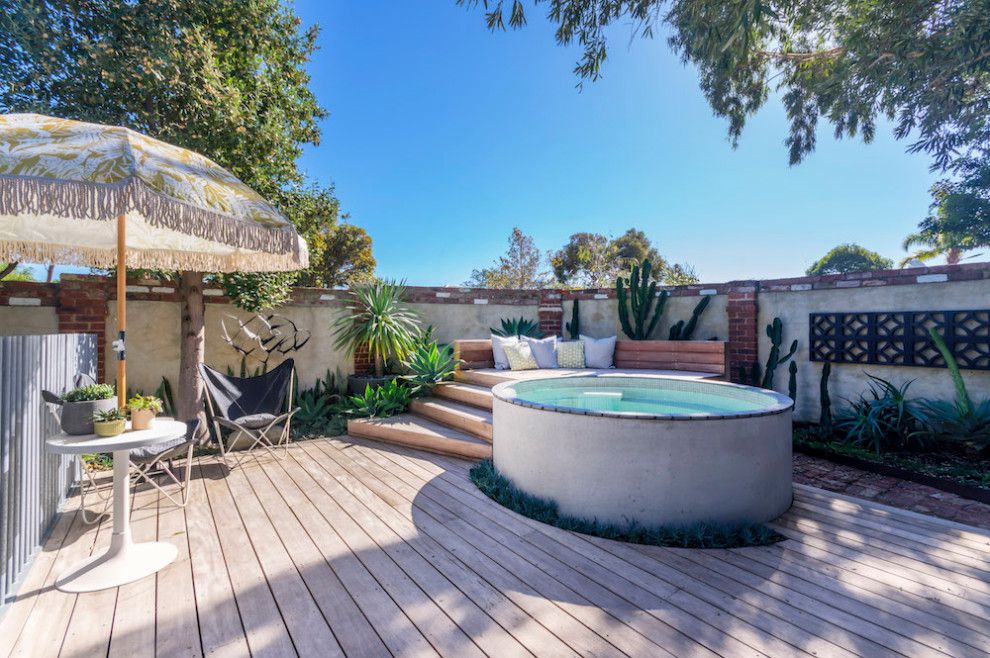If you own a pool, you know that keeping it clean and sparkling is crucial for a refreshing swimming experience. But how often should you shock your pool? Shocking your pool is an essential step in maintaining its water quality and preventing the growth of bacteria and algae. In this article, we will explore the recommended frequency of shocking your pool to ensure a safe and enjoyable swimming environment.
This image is property of images.pexels.com.
What is pool shock?
Pool shock refers to the process of adding a concentrated dose of chemicals to your swimming pool in order to maintain water quality and kill any harmful bacteria or algae. This is an important and necessary step in pool maintenance to ensure that the water remains clean, clear, and safe for swimming.
Importance of pool shock
Maintains water clarity
One of the key benefits of pool shock is that it helps to maintain water clarity. Over time, various impurities such as dirt, leaves, and oils can accumulate in the pool, leading to cloudy or murky water. Shocking the pool helps to oxidize and remove these impurities, resulting in crystal clear water that is visually appealing and inviting for swimmers.
Kills bacteria and algae
Another crucial role of pool shock is its ability to kill harmful bacteria and algae. These microorganisms can multiply quickly in a pool, especially in warm and humid conditions, and can lead to various health issues if left untreated. The chemicals in pool shock effectively eradicate these organisms, ensuring a safe swimming environment for you and your loved ones.
Helps adjust pH levels
Maintaining the proper pH balance in your pool is essential for the health and comfort of swimmers. When the pH levels are too high or too low, it can cause skin and eye irritation, damage pool equipment, and result in inefficient chlorine usage. Pool shock often contains chemicals that help to adjust the pH levels, ensuring that the water is within the optimal range for safe and enjoyable swimming.
Factors to consider
Before determining how often you should shock your pool, it’s important to take into account several factors that can influence the frequency of pool shock treatments. These elements include:
Pool usage
The frequency at which you use your pool will dictate how quickly contaminants build up in the water. If you have a high number of swimmers or regularly host pool parties, the pool will require more frequent shocking to maintain its cleanliness.
Weather conditions
Warmer and sunnier weather conditions can promote the growth of bacteria and algae in your pool. If you live in an area with a hot climate or experience a particularly humid summer, you may need to shock your pool more frequently to combat these issues.
Pool size and volume
The size and volume of your pool will also impact how often you need to shock it. Larger pools will naturally have more water to treat and may require more frequent shocking compared to smaller pools.
Water quality
If there are underlying issues with your water quality, such as high levels of minerals or metals, you may need to shock your pool more often to address and rectify these problems.
Presence of swimmers
The number of swimmers using the pool on a regular basis can affect the water quality. More swimmers introduce additional impurities into the pool, which may require more frequent shock treatments.
Different types of pool shock
There are several different types of pool shock available, each with its own unique composition and benefits. These include:
Calcium hypochlorite
Calcium hypochlorite is one of the most common types of pool shock and is often sold in granular or tablet form. It contains a high concentration of chlorine and is effective at killing bacteria and algae. However, it can also raise the calcium levels in the pool, potentially causing scaling issues if not properly balanced.
Sodium hypochlorite
Sodium hypochlorite is a liquid form of shock that also contains a high concentration of chlorine. It is particularly effective at killing bacteria and algae and is often used for regular maintenance or for more severe cases of water contamination.
Dichlor shock
Dichlor shock contains a combination of chlorine and cyanuric acid, which helps to stabilize the chlorine levels in the pool and prevent it from being quickly depleted by sunlight. This type of shock is commonly used for outdoor pools or pools that receive a lot of sunlight exposure.
Non-chlorine shock
Non-chlorine shock, such as potassium monopersulfate, is an alternative to traditional chlorine-based shocks. It is a popular option for those who are sensitive to chlorine or prefer to minimize the use of chlorine in their pool. Non-chlorine shocks work by oxidizing contaminants in the water and are effective at maintaining water clarity and killing bacteria.
This image is property of images.pexels.com.
Recommended schedule for shocking your pool
The frequency at which you should shock your pool will depend on various factors, as mentioned earlier. Here are some general recommendations for different shock treatment schedules:
Weekly shocking
For pools that are heavily used or located in areas with warm and humid climates, weekly shocking is recommended. This helps to keep up with the increased contaminant levels and prevents the buildup of bacteria and algae.
Every other week
If your pool has moderate usage and is located in an area with mild weather conditions, shocking every other week may be sufficient. This schedule allows for regular maintenance without over-treating or under-treating the water.
Once a month
For pools with light usage or in cooler climates, shocking once a month may be enough to maintain water quality. However, it’s important to closely monitor the water condition and adjust the frequency accordingly if signs of contamination or imbalance arise.
Bimonthly
In some cases, particularly for pools that are not frequently used or are effectively covered when not in use, shocking once every two months may be sufficient. However, it’s still essential to regularly test the water and inspect for any signs of water quality deterioration.
As needed
In certain instances, you may need to shock your pool on an as-needed basis. For example, after heavy rainfall or if you notice signs of contamination such as algae growth or cloudy water. It’s crucial to address these issues promptly to avoid further problems.
Signs that your pool needs shocking
It’s important to regularly monitor your pool’s condition to determine when it needs shocking. Some common signs that your pool may require shock treatment include:
Cloudy water
If your pool water appears dull or murky, it is an indication of high levels of impurities and contaminants. Shock treatment can help clarify the water and restore its clarity.
Strong chlorine odor
While it’s normal for pools to have a faint chlorine smell, a strong, overpowering odor may indicate the presence of excessive contaminants. Shocking the pool helps to break down these contaminants and eliminate the chlorine smell.
Algae growth
The presence of algae in your pool is a clear indication that it needs immediate attention. Algae growth can lead to slippery surfaces, poor water quality, and other health concerns. Shock treatment effectively kills algae and prevents its further spread.
Skin and eye irritation
If you or your swimmers experience skin or eye irritation after swimming, it may signal an imbalance in the pool’s water chemistry. Shock treatment helps to restore the proper chemical balance, creating a more comfortable swimming environment.
This image is property of images.pexels.com.
Steps to properly shock your pool
To ensure that you properly shock your pool and achieve the desired results, follow these steps:
Test the water
Before adding any shock treatment, it’s important to test the water using a reliable pool testing kit. This will help you determine the current chemical levels, including chlorine, pH, and alkalinity.
Calculate the shock dosage
Refer to the manufacturer’s instructions or consult with a pool professional to determine the appropriate amount of shock treatment to add to your pool. The dosage will depend on factors such as the size of your pool, the type of shock used, and the current condition of the water.
Distribute the shock evenly
To ensure even distribution of the shock treatment, follow the instructions provided by the manufacturer. Some shock treatments may require pre-dissolving in a bucket of water before pouring it around the pool edges or directly into the skimmer. Others may be added directly to the pool water.
Run the pool pump
After adding the shock treatment, run the pool pump for several hours to help circulate and distribute the chemicals throughout the water. This will ensure that the shock treatment reaches all areas of the pool and effectively treats any contaminants.
Monitor and retest the water
After the recommended waiting period, retest the water to verify that the chemical levels are within the desired range. Adjust as necessary based on the results, and continue to monitor the water quality regularly to maintain optimal conditions.
Precautions while shocking your pool
While shocking your pool is a routine maintenance task, it’s important to take certain precautions to ensure your safety and the effectiveness of the treatment. Consider the following precautions:
Protective clothing
When handling pool shock chemicals, it’s important to wear appropriate protective clothing, such as gloves and goggles, to avoid direct contact with the skin or eyes. Follow the manufacturer’s instructions for safe handling and disposal of the chemicals.
Follow manufacturer’s instructions
Always read and follow the manufacturer’s instructions when using any pool shock products. Each type of shock may have specific guidelines for dosage, application, and safety precautions. Following these instructions will help you achieve the best results while minimizing potential risks.
Keep children and pets away
During the shock treatment process and until the water has returned to safe swimming conditions, it’s essential to keep children and pets away from the pool. This will prevent accidental exposure to the chemicals and ensure their safety.
Monitor water balance after shocking
After shocking your pool, closely monitor the water balance to ensure that it remains within the recommended range. Testing the water regularly and making any necessary adjustments will help maintain healthy water conditions and extend the life of your pool equipment.
Benefits of regular pool shocking
Regularly shocking your pool provides numerous benefits that contribute to a better swimming experience and long-term pool maintenance. Some of these advantages include:
Healthy and safe swimming environment
By killing bacteria, algae, and other contaminants, regular pool shock treatments create a healthy and safe swimming environment for you and your family. This reduces the risk of waterborne illnesses and ensures optimal water quality for enjoyable swimming.
Prevents the development of resistant organisms
Over time, bacteria and algae can develop resistance to chlorine or other sanitizing agents, making them more challenging to eradicate. By consistently shocking your pool, you prevent the development of resistant organisms, ensuring that your pool always remains clean and safe.
Extends the life of pool equipment
Regular pool shock treatments help to maintain optimal water chemistry, which reduces the strain on pool equipment such as filters, pumps, and heaters. This extends their lifespan and saves you money on costly repairs or replacements.
Saves money on pool maintenance
Routine pool shock treatments can save you money in the long run by preventing the need for extensive cleaning, maintenance, or costly chemical adjustments. By consistently addressing water quality issues, you avoid major problems and enjoy a well-maintained pool that requires minimal upkeep.
Conclusion
Regular pool shocking is a crucial aspect of pool maintenance that ensures clean, clear, and safe swimming water. By understanding the importance of pool shock, considering relevant factors, and following the recommended schedule and precautions, you can maintain a healthy and inviting pool environment. Prioritizing pool shock treatments will not only enhance your swimming experience but also extend the life of your pool equipment and save you money on maintenance in the long run. So, take the necessary steps to keep your pool in top condition and enjoy the benefits of a well-maintained swimming pool.









